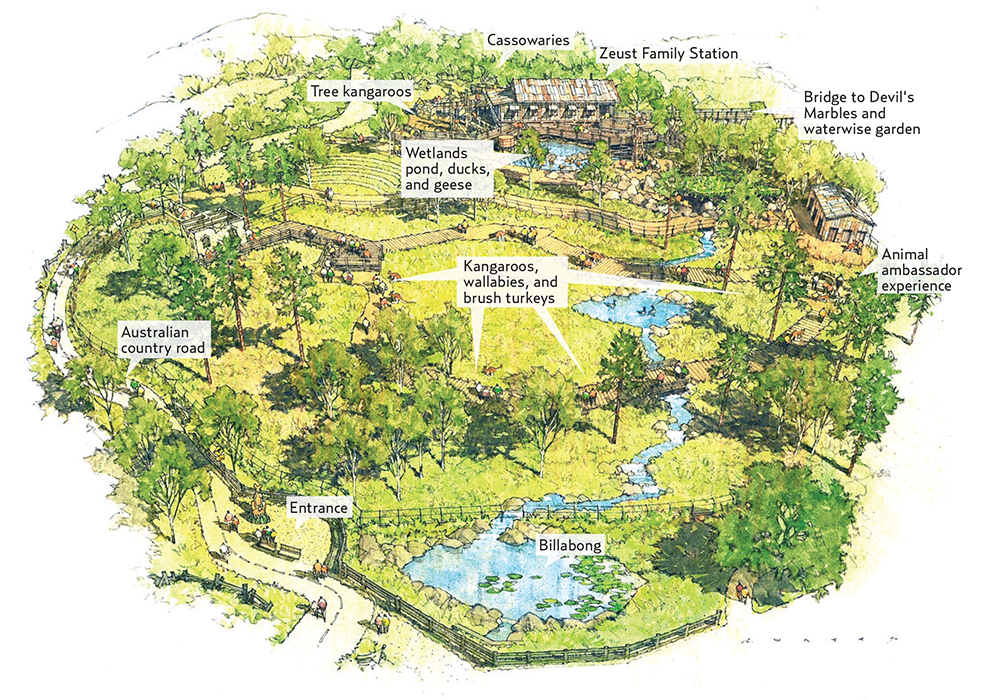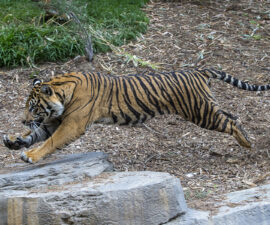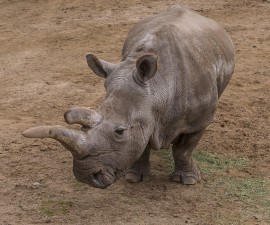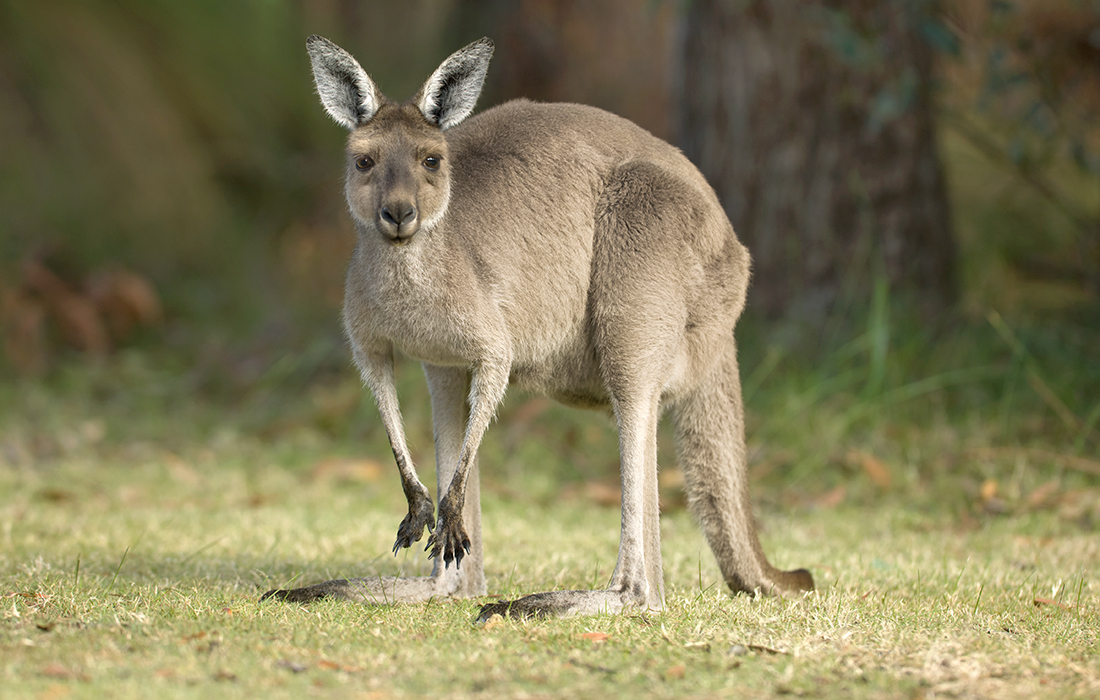
Walkabout Australia
2018 will be the year to “go on walkabout,” at the Safari Park’s new Australian adventure
BY Karen Worley
Photography by Ken Bohn
Swirls of red earth stir as you stroll down the country road, long grasses rippling with the breeze on either side. Welcoming eucalyptus and pine trees cast shade on the road ahead, where a bright yellow sign announces “Caution: Kangaroo Crossing.” The native, brightly colored bottlebrush ushers you around the bend, and you come upon a savanna meadow, where kangaroos and wallabies wander, munching on the grasses, hopping to and fro, and stretching out on their sides to nap in the sun. You’ve been transported Down Under—this is Walkabout Australia!
The Safari Park’s Newest Land of Discovery
Walkabout Australia, opening in summer 2018, will add a new dimension to the Safari Park’s adventures. Designed to represent Australia’s rural landscapes and the animals, plants, and habitats encountered along backcountry roads, Walkabout Australia explores the unique species that call this place home, how they interact with the humans that share their world, and the challenges they face in finding water, food, and shelter in a changing environment. The journey—or “walkabout,” as the Australians say—will take you through four different types of habitat, as you also encounter aspects of the rural life and traditions of the people who live there, and discover what makes this place so extraordinary.
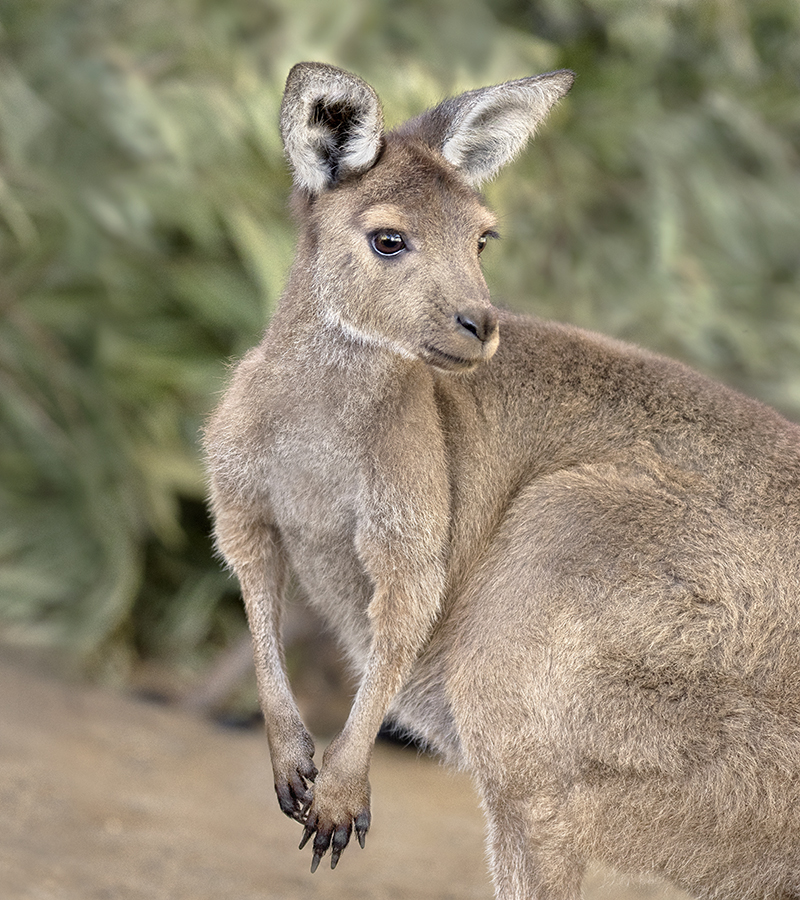
JUMPING INTO WALKABOUT AUSTRALIA
The western gray kangaroo will be one of the star species in the Safari Park’s newest adventure.
Sunny Savanna
The wide-open grasslands of Australia are home to one of its iconic species: the kangaroo. These hopping marsupials—along with their scientific family members, wallaroos and wallabies—are grazers, adapted to feed on various types of grasses and other low-growing plants. They fill the same habitat role in Australia that hoofed herbivores do in other parts of the world.
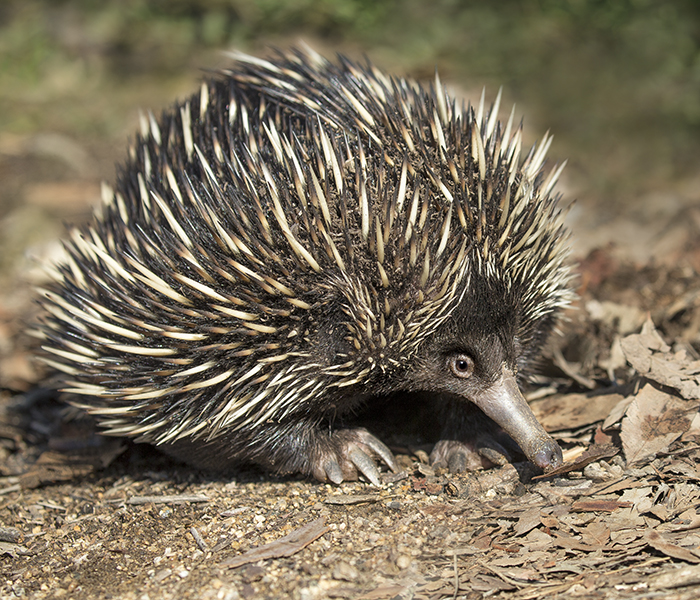
LOOKING SHARP
The short-beaked echidna is one of only five mammal species on Earth that lays eggs!
At Walkabout Australia, you’ll encounter an expanse of grassland that is home to a large group of western gray kangaroos and red-necked wallabies. A pathway leads you into their world, meandering through the grasses and allowing close viewing of the bouncy inhabitants. There are no barriers, so the animals may even come right up to interact with you! Interpretive volunteers will be on hand to answer questions and to point out the unique characteristics and behaviors of these macropod species. There is also an animal interaction area at the far side of the grasslands, where you’ll have the opportunity to meet other Australian animal ambassadors, from an echidna or wombat to a blue-tongued skink or sugar glider.
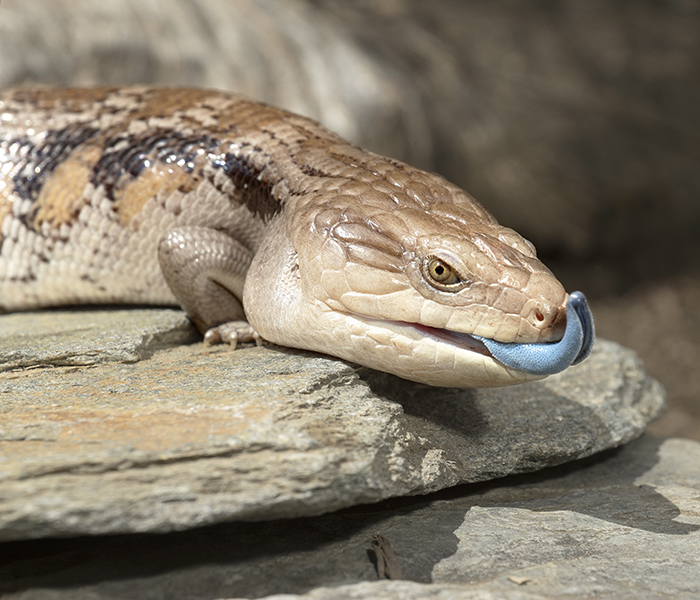
BRIGHT BLUE DISTRACTION
Australia’s blue-tongued skink flashes its tongue to startle potential predators, giving it time to escape.
In addition to the kangaroos and wallabies, you may see the Australian brush turkeys that wander freely throughout Walkabout Australia. They’re hard to miss, with their red heads and yellow wattles. From September to March, you may even see them constructing their big mound nests, where their eggs incubate from the warmth of the surrounding leaves and soil—no egg sitting required!
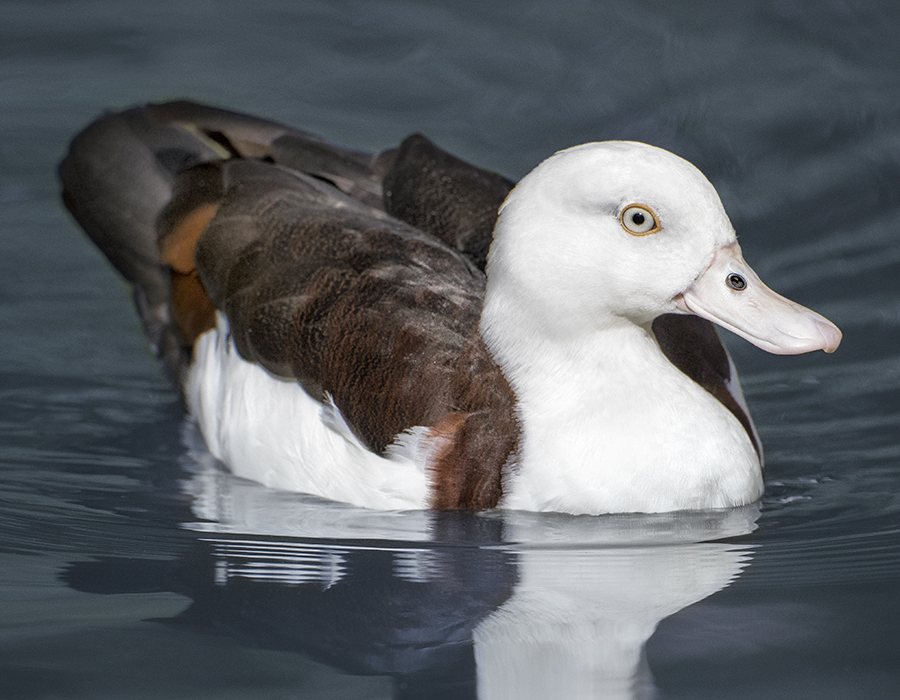
AT HOME IN THE SWAMPS
The radjah shelduck lives in the brackish waters of Australia’s mangrove and paperbark wetlands.
Life-giving Water
In this era of changing climate conditions, Australia—like California—is experiencing longer and more widespread periods of drought, along with an increase in wildfires. As a result, water is a more precious resource than ever. Walkabout Australia explores the vital connection between water and the animals and people that depend on it. A stream runs through the grassland area, pooling in a pond—called a billabong by Australians—where animals gather to drink, and waterfowl like radjah shelducks, freckled ducks, and magpie geese paddle. The size and depth of billabongs varies with the seasons and conditions. In some areas, they may only appear and spring to life briefly with the rains, then dry up again, similar to California’s vernal pools.
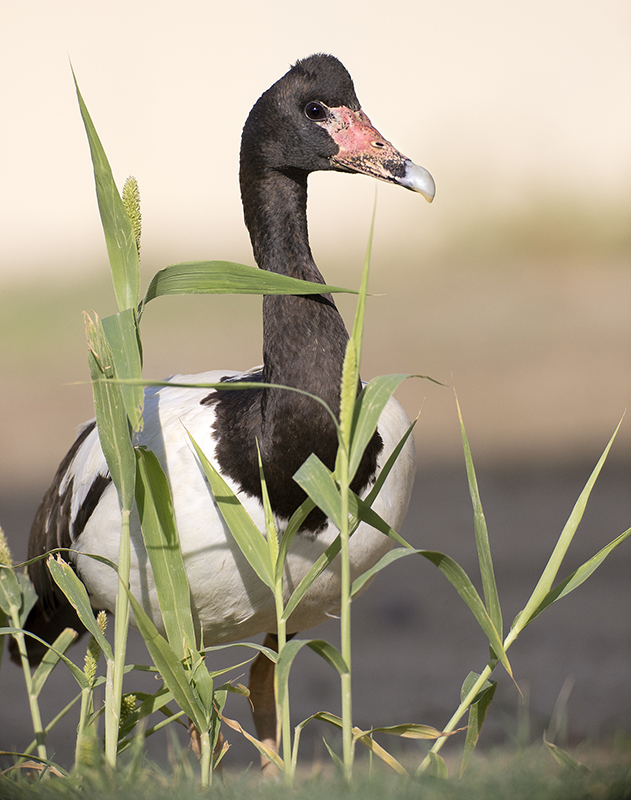
FLOCKING TO WALKABOUT AUSTRALIA
Magpie geese live in large flocks and are a regular sight in wetland habitats.
Past the grassland habitat of Walkabout Australia, you’ll come upon the source of the stream: a larger pond with more waterfowl and the signs of human habitation. A water conservation tank, like one that might be used by local farmers or ranchers, demonstrates how collecting water during the rains can be a valuable source during dry times, and provides suggestions for how to collect and save water at your own home. A children’s area allows kids (and adults) to take a break and play in shallow, lapping water at the pond’s edge while watching the birds.
The pond is at the foot of Walkabout Australia’s central gathering place: the Zeust Family Station, a building representing the wool shearing sheds found on Australia’s many sheep ranches, which are called “stations.” Here, you can stop for a bite to eat and a cool drink—including a beer—then take a look around the themed building to learn about the various techniques and traditions of sheep ranching and wool production practiced in Australia for more than 200 years.
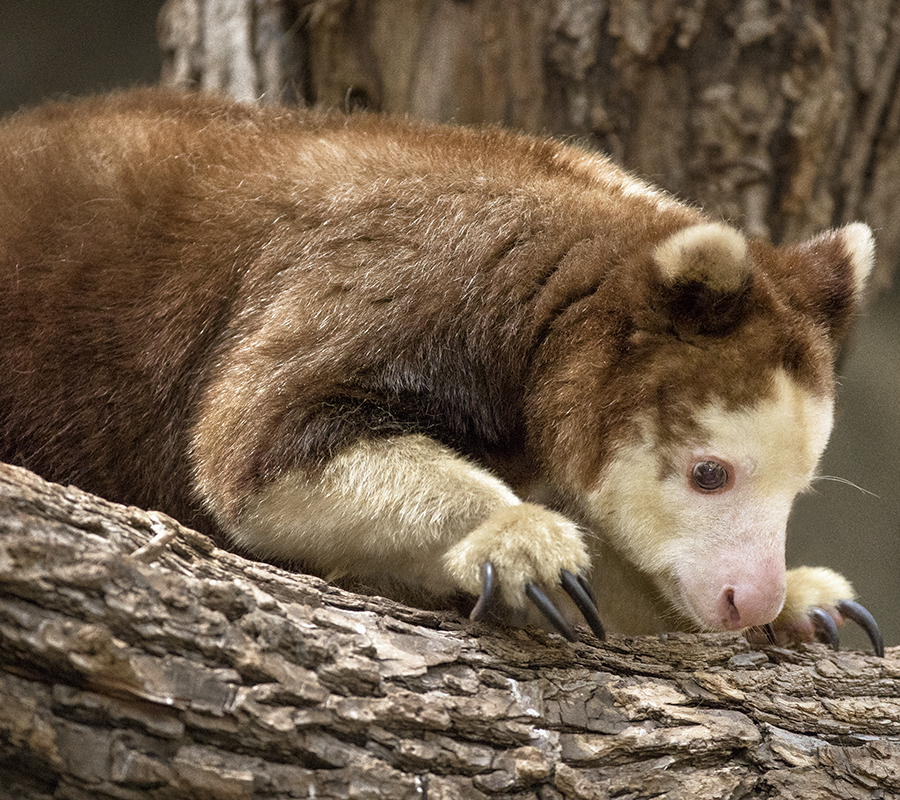
TREES, PLEASE
Matschie’s tree kangaroos are specially adapted for their arboreal life in the rain forest. (Location: Minnesota Zoo)
Delve into the Rain Forest
On the other side of the Zeust Family Station, Walkabout Australia takes you into rain forest habitat to meet two more amazing animals: the tree kangaroo and cassowary. Tree kangaroos have evolved differently from their other kangaroo cousins, with adaptations that allow them to spend their lives in the trees rather than on the ground. They have long, sharp claws on all four feet for climbing, and instead of hopping, their strong legs and tail help them leap and balance in the treetops. Some tree kangaroos live in Australia, but Walkabout Australia’s Matschie’s tree kangaroos are native to Papua New Guinea, where they are an endangered species.
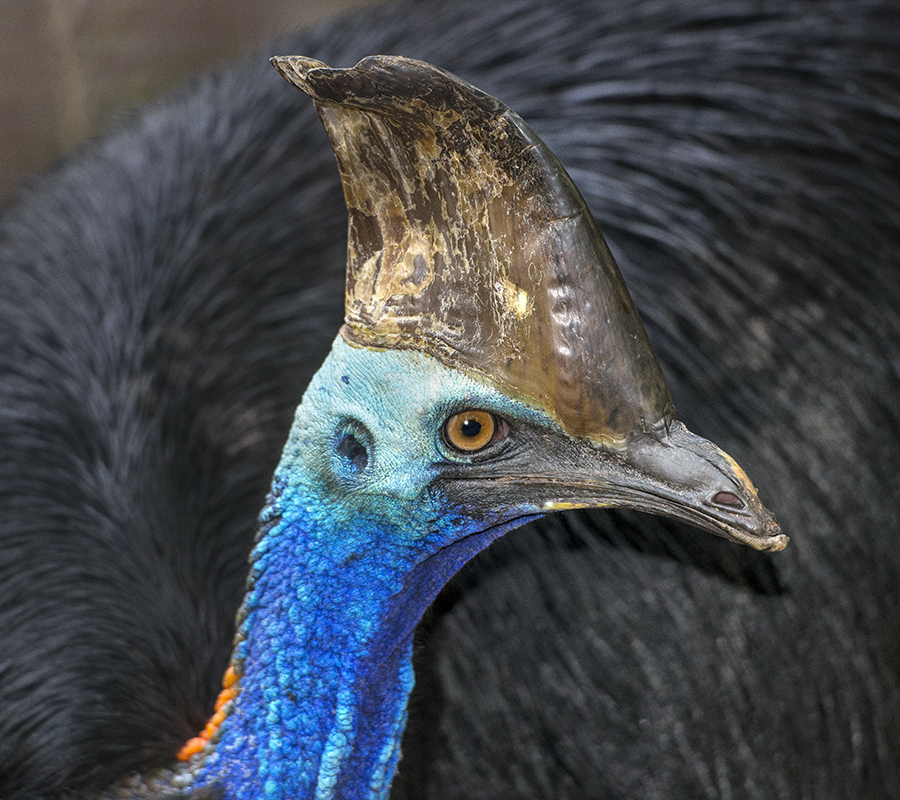
STRIKING BIRD
Southern cassowaries are set to impress with their brightly colored head and neck, not to mention a dangerous claw.
Three lush exhibits in Walkabout Australia are home to a bird that is elusive and mysterious, yet also famous for its ferocity: the southern, or double-wattled, cassowary. Tall, crested, and prehistoric looking, flightless cassowaries stalk through the forest underbrush looking for fruit and fungi. With a specialized digestive system, they can eat things that would be poisonous to other animals. Cassowaries are shaped just right to crash through brush in a hurry—but if cornered, the cassowary can display the characteristic that gives it the nickname “most dangerous bird in the world.” The cassowary has an elongated and razor-sharp claw on each foot that can slice an impressive gash in any potential predator, including a human!
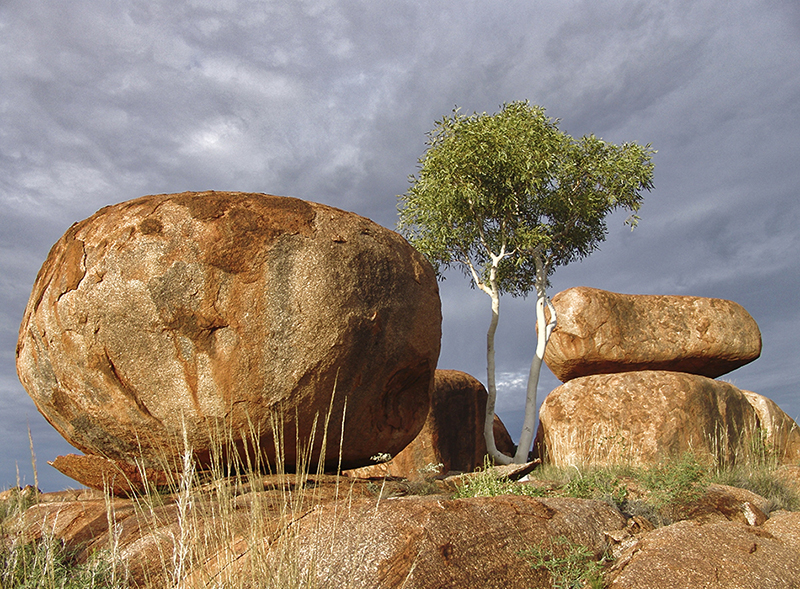
LOOMING LARGE
The Safari Park’s Walkabout Australia will have replicas of the huge boulders found in the Australian desert. (Photo by Daniel Haller/Getty Images)
Desert Sentinels
After leaving the forest of Walkabout Australia, a new path beckons, taking you into more arid habitat. Looming against the sky are enormous, rounded rocks similar to those found in the Australian desert, known as Devil’s Marbles. They usher you into a garden of water-wise and drought-tolerant plants, some native to Australia and some found in California, but all masters at making the most of what little moisture is available. From here, Walkabout Australia has opened up new routes that can take you to World Gardens, or to Condor Ridge, making it easier than ever to explore all the Safari Park has to offer. Mark your calendar for next summer—it’s time to go on walkabout!

